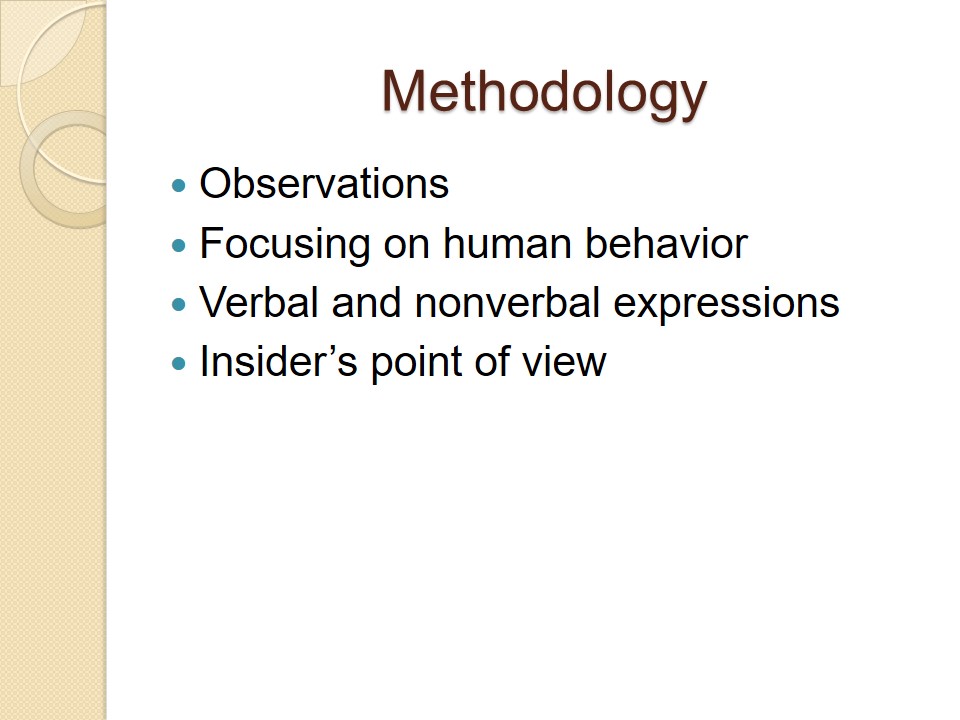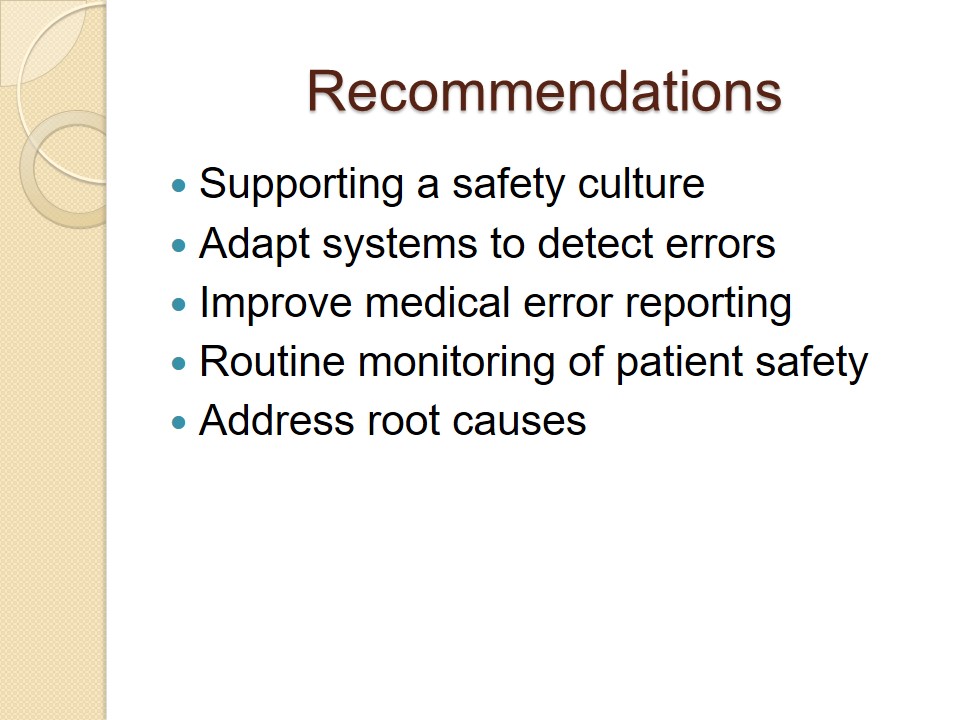Introduction
- Topic: Collaboration to improve patient safety;
- Goals/Objectives:
- Improve medication and diagnostic safety;
- Prevent unnecessary hospital admissions;
- Improve patient data privacy.
- Rationale:
- Poor collaboration compromises patient safety (McVay, Stamatakis, Jacobs, Tabak, & Brownson, 2016).
- Harm to patients.
My practicum project topic is “Incorporating effective team collaboration to improve patient safety.” Three goals guided the project: improvement of medication and diagnostic safety, prevention of unnecessary emergency department hospital admissions, and the enhancement of patients’ data privacy. These three goals are instrumental in the development of patient safety standards.
The rationale for undertaking the practicum project is rooted in the fact that about 25% of patients who seek medical or health services are harmed by poor healthcare systems (World Health Organization, 2019). This problem is further compounded by the lack of collaboration among healthcare teams, which makes it difficult for professionals to coordinate healthcare functions. Consequently, the practicum project plan seeks to change this outcome by improving collaboration levels among healthcare teams.


Methodology
- Observations.
- Focusing on human behavior.
- Verbal and nonverbal expressions.
- Insider’s point of view.
The project setting was the healthcare environment where patients received emergency and medical services. As mentioned at the start of this presentation, the proposed intervention focused on improving team collaboration standards to promote safety standards. The linked data was collected by observing human behavior and verbal or nonverbal expressions of professionals working in the healthcare setting. From an insider’s point of view, I was able to analyze the healthcare system and make recommendations for its improvement, based on key areas of healthcare system delivery that could be enhanced through collaboration.

Findings
- Enhance level of coordination.
- Share decision-making responsibilities.
- Promote cooperation among healthcare workers.
- Nurturing partnerships.
The observations I made during my practicum experience demonstrated that enhancing the level of coordination among healthcare teams was instrumental in improving patient safety standards. In this regard, there was a need for healthcare teams to collaborate with one another and nurture partnerships, which are not only beneficial to the administration of healthcare functions but also instrumental in creating a safe environment for patients to receive health services. This objective could be achieved by sharing decision-making responsibilities.

Review Procedures
- Peer review assessments.
- Appraising patient satisfaction standards.
- Comparing hospital admission rates.
- Reviewing patients’ feedback (McVay et al., 2016).
The review procedures that could be used to assess the practicum goals have been used in several public health studies, such as those authored by McVay et al. (2016). At an industry level, peer-review assessments could be done to compare how improvements in patient safety standards contrast with other health-based initiatives designed to achieve the same goal. Reviewing the level of patient satisfaction, through open feedback, is also another assessment method that could be used to assess the project objectives. This metric is instrumental in reviewing end-user views regarding changes in healthcare service delivery systems because high levels of patient safety improves patients’ satisfaction levels. Lastly, comparing hospital admission rates with historical figures is also a useful tool for reviewing the project objectives.

Potential Outcomes
- Create enjoyable healthcare environments.
- Improve patient safety levels (World Health Organization, 2019).
- Reduce worker absenteeism rates (McVay et al., 2016).
One of the potential outcomes that could be realized from the implementation of the practicum project recommendations is the development of productive and enjoyable healthcare environments. This outcome is beneficial to both patients and healthcare staff because increased levels of collaboration would create work harmony for teams who would, in turn, improve the quality of care offered. In this regard, implementing the findings of the practicum project could reduce worker absenteeism rates .

Implications for Practice
- Enhance organizational leadership capacity (Saravo, Netzel, & Kiesewetter, 2017).
- Minimize preventable harm.
- Support collaboration in the healthcare environment.
- Enhance the global push for universal health coverage (Pina et al., 2015; World Health Organization, 2019).
- Minimization of potential exposures to harm.
- A reduction of medical errors.
- Lower litigation costs (Dingake, 2017).
The views expressed in this presentation have many implications on the healthcare sector because the lack of effective coordination among healthcare staff is a systemic problem in many jurisdictions. The enhancement of organizational leadership capacity is a possible byproduct of implementing the findings because team collaboration should be enhanced through effective leadership. If this approach is adopted, there would be a decline in preventable harm and increased support for collaboration in the healthcare environment. Lastly, as different countries strive to attain universal health coverage, the findings of this study could help them to achieve this vision because patient safety is at the center of its realization.
From an organizational perspective, the findings of the practicum experience could impact the healthcare environment through a reduction of medical errors, which are common causes of patient safety concerns. In addition, they could help minimize potential exposures to harm, which is a key tenet of healthcare service delivery. Lastly, the potential for lower litigation costs is also a possible outcome because increased incidences of medical errors could force patients to seek legal redress.


Recommendations
- Supporting a safety culture.
- Adapt systems to detect errors.
- Improve medical error reporting.
- Routine monitoring of patient safety.
- Address root causes.
Based on the insights provided in this paper, the need for organizations to have a supportive culture for promoting patient safety should be emphasized. There is also a need to adapt existing care delivery processes to detect systemic errors because such incidences are often poorly diagnosed because of misinformation or the lack of sufficient data. This recommendation should be coupled with the improvement of medical error reporting procedures and the routine monitoring of patient safety standards. In this regard, there would be a low probability of undertaking superficial assessments because the root causes of the errors would be identified and patient safety improved.

Scholarly Products
- American Nursing Association (ANA, 2019).
The findings of this practicum experience are useful to the advancement of the nursing practice because the healthcare discipline is at the core of service delivery. Consequently, the findings could provide scholarly material that support the objectives of the American Nursing Association, which relies on evidence-based practice to advance the nursing profession and improve health for all. The American Nursing Association is the preferred organization for publishing the findings of the practicum experience because, for over a century, it has been dedicated to the improvement of healthcare and patient safety standards by representing the interests of registered nurses in the country. Based on the fact that the practicum project was centered on the observation of healthcare systems and processes, from a nursing perspective, the American Nursing Association emerges as a natural pick for disseminating the findings. The evidence published on this platform could later be used to expand the findings of academic research studies that focus on interdisciplinary collaboration in the healthcare setting. The outcomes of the process could also be published in nursing journals.

Synthesis and Conclusion
- Patient safety.
- Collaboration.
- Evaluation.
- Implications in practice.
Major advances in the nursing field and other tenets of the healthcare sector have been developed based on empirical findings in the medical setting. The pieces of information highlighted in this presentation come from the same methodology. Therefore, they are valid in informing practice. Collaboration is an important area of healthcare practice that has widespread implications on patient safety, but it is often ignored because it is difficult to bypass existing systems and procedures of healthcare service delivery without interfering with the functions of other healthcare departments. This challenge presents an accountability problem, which can only be addressed by examining the healthcare service delivery model as a chain of interconnected functions. This philosophy of analysis informs this study because collaboration is presented as an interconnected web of healthcare services. More importantly, the discussion has been broken down into four main sections: patient safety, collaboration, evaluation and implications on practice. Broadly, this presentation has highlighted patient safety as a major concern in the healthcare sector. The need for healthcare teams to collaborate effectively and minimize incidences of medical errors has also been assessed. However, for the best results to be realized, there needs to be a proper evaluation of the desired objectives to make sure that all teams work towards their achievement. This is the only way the recommendations outlined will have a positive impact on the healthcare practice.

Note
Presenting my practicum project plan required a comprehensive understanding of multiple issues, which influence care delivery in the healthcare setting. For example, the target audience had to be established in advance to tailor the messages to fit the appropriate context, as proposed by Alspach (2010), Tabak, Reis, Wilson, and Brownson (2015). In addition, the methodology used had to be acknowledged because the findings were developed in a context-specific healthcare setting. The distinction I made throughout the process of undertaking the project was to focus on safety concerns. There was also a deliberate attempt to link safety to systemic failures of the health care system through the actions of health professionals Therefore, patient safety issues that emanated from other aspects of healthcare service delivery were omitted from the discussions. In addition, when preparing the presentation, I strived to include relevant and important data to avoid laboring the audience with too much information. The objective was to present information in a simple and concise manner. Overall, the project gave me an opportunity to integrate academic learning in a practical healthcare setting. Therefore, the practicum experience was an important experience, as it helped me to observe and learn from different healthcare professionals that work in the nursing field.

References
- ANA. (2019). Nurses advancing our profession to improve health for all. Web.
- Dingake O. (2017). Human rights, TB, legislation, and jurisprudence. Health and Human Rights, 19(1), 305-309.
- McVay, A. B., Stamatakis, K. A., Jacobs, J. A., Tabak, R. G., & Brownson, R. C. (2016). The role of researchers in disseminating evidence to public health practice settings: A cross-sectional study. Health Research Policy and Systems, 14(1), 42-46. Web.
- Pina, I. L., Cohen, P. D., Larson, D. B., Marion, L. N., Sills, M. R., Solberg, L. I., & Zerzan, J. (2015). A framework for describing health care delivery organizations and systems. American Journal of Public Health, 105(4), 670-9. Web.
- Saravo, B., Netzel, J., & Kiesewetter, J. (2017). The need for strong clinical leaders – Transformational and transactional leadership as a framework for resident leadership training. PloSOne, 12(8), 1-9. Web.
- World Health Organization. (2019). Patient safety. Web.
- Alspach, G. (2010). Converting presentations into journal articles: A guide for nurses. Critical Care Nurse, 30(2), 8-15.
- Tabak, R. G., Reis, R, S., Wilson, P., & Brownson, R. C. (2015). Dissemination of health-related research among scientists in three countries: Access to resources and current practices. Biomed Research International, 5(2), 1-10.